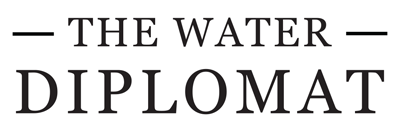International Water Law and Transboundary Water Cooperation
27 Mar 2023
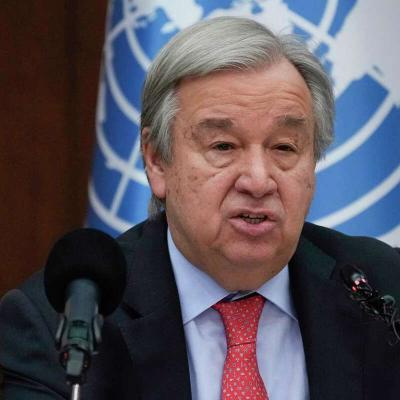
“Water is about peace. It is about sustainable development. It is about fighting poverty, supporting food systems and creating jobs and prosperity. Water is about human rights and ...
8 Apr 2023
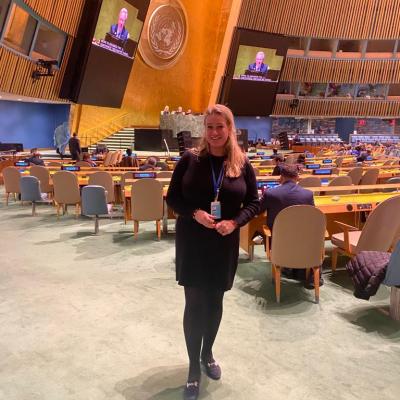
Tobias Schmitz: From the side of The Water Diplomat, we would be very interested in getting a perspective from you on current affairs in international water diplomacy from the pers...
10 Apr 2023
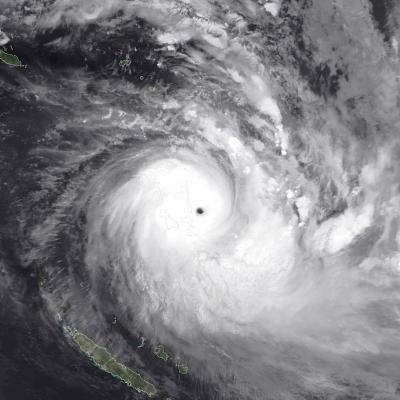
The small island state of Vanautu has successfully led an initiative to clarify the legal obligations of governments with regard to the rights of present and future generations in ...
18 Apr 2023
Water for Nature, Nature for Water:
On the 23rd of March, a side event was held at the UN 2023 Water Conference to present international and national legal tools and local customary norms to mainstream the protection...
Water in Armed Conflict and other situations of violence
7 Apr 2023
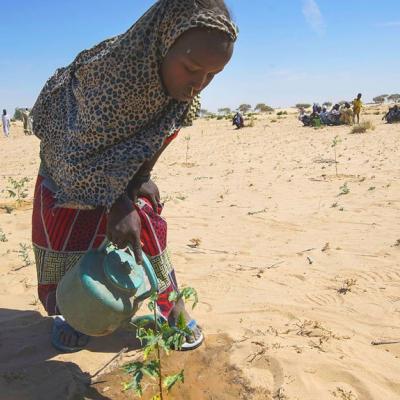
At an event held in New York during the UN water Conference on the 24th of March, the Wash Roadmap alliance presented an overview of the current state of humanitarian WaSH response...
14 Apr 2023
Unicef: triple threat of disease, climate risks and unsafe WASH threaten 190 million children
According to UNICEF, 190 million children across 10 African countries are at the highest risk from a convergence between three factors, i.e. inadequate Water, Sanitation and Hygien...
14 Apr 2023
Humanitarian situation in Syria and Türkiye still critical
According to ReliefWeb, almost two months after the devastating earthquakes that struck in Syria and Türkiye, the death toll from the earthquakes has now surpassed 50,000 people. I...
9 Apr 2023
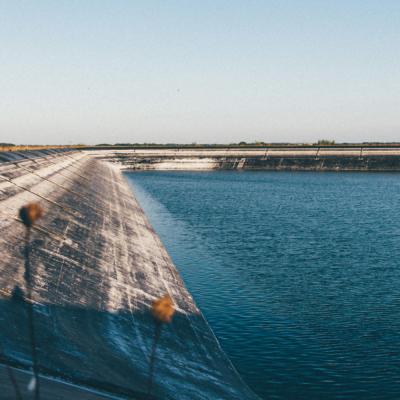
In France, protests erupted against the construction of agricultural reservoirs in the southeast of the country on the 25th of March. According to the organisers of the protests, m...
Knowledge Based, Data-Driven Decision Making
3 Apr 2023
Antarctic ice melt could slow ocean currents by up to 40% in three decades
In an article published in Nature on the 29th of March, researchers have announced that new modelling shows that more rapid melting of ice in the Antarctic could lead to a substant...
18 Apr 2023
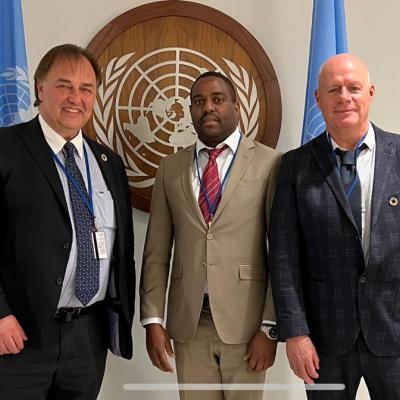
Independently of the professional discipline from which we analyse water management - whether we are looking at water from the perspective of international water law,financial inve...
30 Mar 2023
World Water Development Report 2023: the importance of cooperation and partnerships
The United Nations World Water Development Report 2023, dedicated to the theme of partnerships and cooperation for water, was launched on the 22nd of March 2023. The report emphasi...
11 Apr 2023
Study shows that privileged urban populations are key drivers of urban water crises
In the first two decades of the twentieth century, 79 cities across the world have suffered acute water shortages due to continuous growth in demand as well as the impacts of clima...
14 Mar 2023
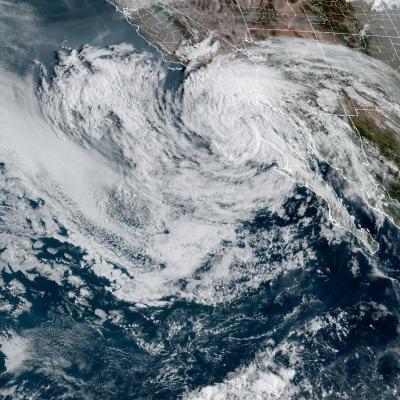
A new study shows that it is possible to apply a five-point scale to what climatologists refer to as ‘atmospheric rivers’. Using such a scale could assist early warning systems and...
6 Apr 2023
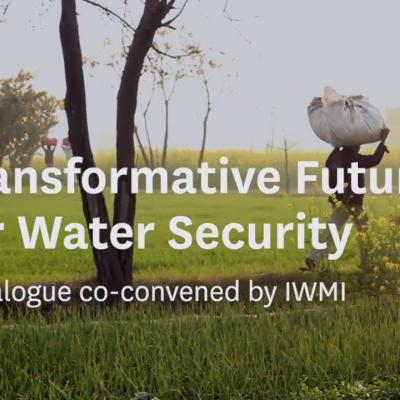
In the run up to the UN 2023 Water Conference, The International Water Management Institute (IWMI) coordinated a year-long dialogue across eight regions of the world focused on...
Finance for water cooperation
21 Mar 2023
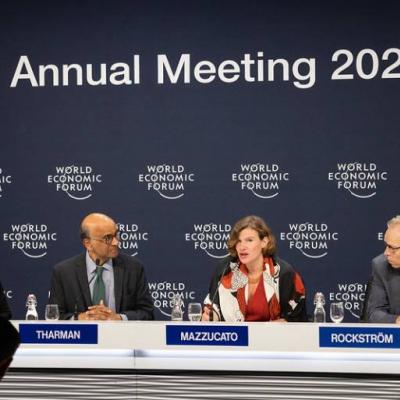
In its March 2023 publication, the Global Commission on the Economics of Water calls for a transformation of the economics and governance of water. Starting from the premise that w...
13 Apr 2023
Six Current and Former Heads of State presented with Presidential Global Water Changemakers Award
Six serving or former heads of state have received the Presidential Global Changemakers Award at the UN Water Conference in New York. Of these heads of state, four are co-chairs of...
National and Local News
14 Apr 2023
U.S. Interior Department announces measures to protect the Colorado River Basin
The U.S. Bureau of Reclamation in the Department of Interior has drafted a set of three different options to preserve the water in the Colorado River Basin, which has been sufferin...
3 Apr 2023
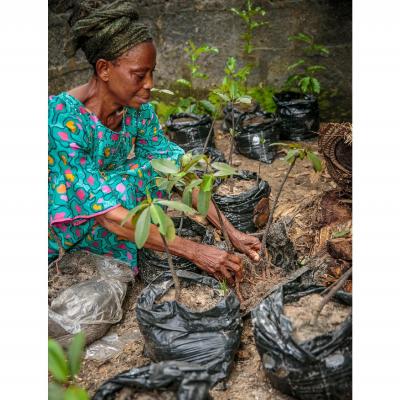
I – Martha Agbani - grew up in the Niger Delta in Nigeria as a member of the indigenous farming and fishing community of Yaataah. For decades, our families lived in constant contac...
20 Mar 2023
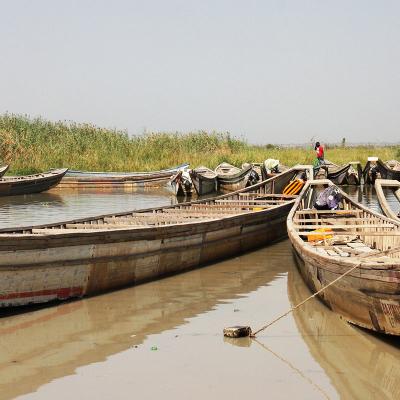
On the 2nd of March, the government of Niger confirmed its intention to acceded to the United Nations Convention on the Protection and use of Transboundary Watercourses and Interna...
International Water Law and Transboundary Water Cooperation

A Paris moment for water?
“Water is about peace. It is about sustainable development. It is about fighting poverty, supporting food systems and creating jobs and prosperity. Water is about human rights and gender equality. That is why water needs to be at the centre of the political agenda. All of humanity’s hopes for the future depend in some way on charting a science based course to bring the Water Action Agenda to life”. These were UN Secretary General Antonio Guterres’ closing remarks at the end of the first dedicated conference on water held at UN level since the Mar del Plata conference of 1977.
The Water Conference was convened by the United Nations General Assembly (UNGA), co-hosted by the Netherlands and Tajikistan, and was held in New York from 22 to 24th March 2023 in the presence of some 9,000 delegates, representatives of different tiers of government, (inter)national non-governmental organisations and research institutions, civil society groups, representatives of indigenous peoples, and trade unions. It was the culmination of the mandate provided by the UNGA in resolution 75/212 to review the implementation of the objectives of the international decade for action on water for sustainable development from 2018 to 2028.
In July 2021, UN-Water, the organisation uniting more than 30 UN agencies with a mandate relating to water and sanitation, released a progress report on the implementation of Sustainable Development Goal 6 (SDG6) on water and sanitation. This report presented a rather sobering assessment of progress, indicating that a quadrupling of efforts would be needed to achieve the eight targets contained under SDG 6. Already in 2020, and based on early indications that SDG 6 implementation was off track, UN-Water had launched an acceleration framework to deliver fast results at an increased scale.
In March 2022, the Executive Secretariat of the 9th World Water Forum had pursued an agenda striving for a paradigm shift in the way in which the three-yearly World Water Forums were organised. Rather than organising a forum with an open water agenda and subdivided into different political, scientific and civil society consultative bodies, the 9th World Water Forum was to be and integrated planning event, decompartmentalising the different consultative bodies and focusing the discussions on outcomes around four key themes of discussion. This led to the announcement of a Blue Deal within the declaration made at the end of the 9th World Water Forum.
However, in follow-up preparatory meetings for the UN Water Conference, the idea of united action around a single ‘deal’ or ‘Paris Moment for Water’, which the host countries and their talented special envoys had advocated, was gradually replaced by a softer structure based on a collection of voluntary pledges. This led to the creation of a basket of commitments collected in the context of the water action agenda, under which some 700 pledges have been received.

The Polder Model for Balanced Water Management: A Dutch Approach
Tobias Schmitz: From the side of The Water Diplomat, we would be very interested in getting a perspective from you on current affairs in international water diplomacy from the perspective of those who are actually ‘producing’ water: on the one hand human rights and international justice but also the nuts and bolts of workplace relations and making water ‘work’. I would like to know more about your current activities at this conference, and I would like to ask you if we can have a look into the Dutch ‘water kitchen’ to understand the unique approach to water management in the Netherlands.
Marcelle Buitendam: Labour Unions are known from television and often associated with strikes. And believe me, we do have experience in these things. However, more importantly, there are quite simply a number of things that need to be done well to make a better world. In addition to economic and legal knowledge, the trade unions also have a great deal of in-house expertise for this. FNV has become a strong business partner for Ministries and Drinking Water Companies and together we come up with solutions.
In the Netherlands we have what is called the ‘polder model’. There is no such word in the English language, and that says everything, because the model that we have is absolutely unique. It is beautiful to see how we as labour union sit at the table (via the foundation for vocational training for enterprises), and contribute to the organisation and the vocational training for future water professionals, and in doing so, serve the whole water value chain, starting with the initial training, and then we have the career trajectory as it is known in the Netherlands with its inflow, throughflow and outflow. This is the foundation, and it requires cooperation, commitment, and trust: it is important to invest in good working relations.
We also have Dutch Water Law, and we must emphasise that water has not been privatised. This, is of course, our golden egg: to show the rest of the world how we have organised our water into supply areas which are not in competition with each other. We are not in the nonsensical situation where we compete for skills, or if the Netherlands were to become indebted, that water sources would be up for sale to generate short term revenue. This role of labour unions as a partner in water management is sensitive: in many countries, labour unions are even prohibited. However, for a water process to really ‘flow’, it is very important to invest in cooperation, because each of us, from our own perspective and role, need to help each other. Now we need to note that the energy production and delivery market in the Netherlands has been privatised, so we do need protection and guarantees from government before we present this model internationally.
Last year, in Geneva at the social summit, we had already applied for our accreditation for the UN Conference and this was being processed. To our surprise we noticed that many of the participant countries were in fact not supportive of public supply models but fully supported privatisation. At that stage we asked ourselves whether we were getting involved at the right time. Therefore, it was with great surprise and pleasure that we noted that key themes of the UN Conference included ‘global public goods / the future is public’ and ‘leave no-one behind’. The Dutch Government has also given the signal that the best way to manage water is in fact public. The Netherlands has 19 water companies – including Aqualabs – with 6300 staff members and a very high level of organisation, where ‘decent work’ is a strong principle, implemented at high quality level. This is something to be proud of: this has been achieved with an inclusive approach, that involves the labour unions in a constructive way. Our symbol for this approach is the spirit level, which we offer as a gift when we start a conversation with partners about what constitutes ‘balance’ in water management. It represents a balance in the market, the drinking water sector as a whole should be in balance. If we are faced with polluted groundwater and we need to invest resources in water treatment, the system is not balanced. Where people collecting payments for water services are under threat of being attacked. In labour relations, per supply area, there need to be decent working conditions for everyone working to supply water. Therefore, we are always striving for balance: a balance in the relationship between the inflow of junior staff and the outflow of older staff members, innovation versus continuity: all of this requires a measure of wisdom and striving for balance.
Tobias Schmitz: As you describe this approach, I am strongly reminded of Integrated Water Resources Management, which is also based on an integrated perspective that seeks a consensual approach across different points of view, different professional disciplines, and different sets of outcomes within a single planning framework for water.
Marcelle Buitendam: Yes indeed, and unfortunately, we do see that many countries and experts do not want to include labour unions. We, on the other hand, have done our training and our studies and sit at the table as a business partners and experts, and we are very proud of this.
Tobias Schmitz: Very interesting, and to what extent have you been able to carry through this message and communicate this approach in New York?
Marcelle Buitendam: We went live twice a day at 12:00 and 15:00 New York time, following all our meetings and discussions during side events and network meetings. Many organisations were very surprised to come across a labour union here at the UN conference. Our message on human rights has been communicated with the right tone of voice, and this has been received and appreciated as such. Of course, we were not at the forefront or in the international limelight of the ‘Dutch approach’ here in New York. We are here to make commitments around the Dutch model, to keep water in public hands, to show the strength of a balanced approach. Once those commitments are made, it is the turn of the water workers to make sure that these commitments – as well as the respect for the whole water cycle - become reality.
Tobias Schmitz: May I ask you: you have mentioned human rights: in order to implement the right to water, one needs to look at the people who are working on a day-to-day basis to ensure that this right is realised. How do you see the circumstances which able the men and women to work on the realisation of human rights?
Marcelle Buitendam: Well, we are here with representatives from several organisations likeVitens, and Water Midden Drenthe. We have a programme of international exchanges to train people on other countries to enable and empower them to develop water sources, to monitor water quality, etc. Of course, this service needs to be paid for, and there is a delicate process of building consumer trust to pay for the services, and ensuring that those who are collecting revenue are protected and that the money is used appropriately for the purposes for which it was intended.
Another aspect that we work on is that all of the international work that we do collectively as water operators is coordinated under the flag of Vitens Evides International. Within this framework, we have an open dialogue with all our members who wish to contribute to international cooperation, and we respond to all of these requests. Our union always need to be open to practical tips and to innovation: there is a 24/7 dedicated helpdesk to respond to everyone working in international cooperation and provide support and backup to their efforts in the field. The country is in motion, water is in motion, workers are in motion, so we have to maintain an approach which is open to continuous learning. This is the essence of our call to action, water flows through our veins, and we approach both our national and our international work on water within a whole of society approach, in the public interest, based on safe and healthy water work and collective labour agreements for a (water) secure future.

UN adopts resolution on climate change initiated by Vanuatu
The small island state of Vanautu has successfully led an initiative to clarify the legal obligations of governments with regard to the rights of present and future generations in relation to climate change. Vanautu has been faced with extreme weather events which have caused large scale damage to property and infrastructure, and for months, it has worked to request other states to co-sponsor the initiative. Vanautu’s efforts have been highly successful, with 119 states ultimately co-sponsoring the drive for a UN resolution to obtain a legal opinion from the International Court of Justice (ICJ) on the legal consequences for countries which have contributed most to greenhouse gas emissions.
On the 29th of March, the United Nations General Assembly passed a vote on the resolution which calls broadly on the ICJ to establish the obligations of states with regard to the climate crisis. More specifically, the ICJ is requested to do two things: first, to clarify the obligations of states under international law to ensure the protection of the climate system – and other parts of the environment – from greenhouse gas emissions, both for other states and for present and future generations. Secondly, the ICJ is asked to clarify what the legal consequences are of these obligations for states which by their acts (and omissions) have caused significant harm to the climate system and caused significant harm to states affected by the climate crisis, as well as for present and future generations.
Vanuatu’s Prime Minister, Ismail Kalsakau, welcomed the vote as a big win for global climate justice, stating “Vanuatu sees today’s historic resolution as the beginning of a new era in multilateral climate cooperation, one that is more fully focused on upholding the rule of international law and an era that places human rights and inter-generational equity at the forefront of climate decision-making .. […] .. “the very fact that a small Pacific island nation like Vanuatu was able to successfully spearhead such a transformative outcome speaks to the incredible support from all corners of the globe.”
Water for Nature, Nature for Water:
On the 23rd of March, a side event was held at the UN 2023 Water Conference to present international and national legal tools and local customary norms to mainstream the protection of rivers and other water-related ecosystems in decision-making and announce commitments for the Water Action Agenda. Initiated by the International Association of Water Law, the event was co-created by 45 participant organisations, and took the form of an intergenerational debate on improving the governance of freshwater biodiversity for the benefit of people and nature and for transformative change towards the achievement of the 2030 Agenda. The Water Diplomat caught up with Dr Flavia Rocha Loures, environmental lawyer and one of the driving forces.
Tobias Schmitz: tell us a little about the background to the event: what was the objective?
Flavia Rocha Loures: the event was initiated by the International Association for Water Law based in Italy. It started as a project to bring different actors together around the idea of both the governance of freshwater biodiversity and a focus on law, which I think are two topics which can get lost in translation, not receiving the attention they deserve in water forums. We tend to talk a lot about nature for water, such as under the heading of ecosystem services that benefit societies and economies, and of nature-based solutions or ecosystem-based adaptation. But we also need to look at the other side of the equation, i.e., water for nature, i.e., the right availability of water of an adequate quality and at the right timing, for which connectivity along rivers and with groundwaters and linked wetlands is essential. We have to look at water for nature and nature for water in tandem: together, they form a virtuous cycle that benefit freshwater ecosystems all stakeholders. Both biodiversity and law tend to get ‘lost in translation’ because there is currently a lot of focus on science and data and funding, which is all necessary. But law and, more generally, good legal, institutional and financial governance, are all key elements of the puzzle: it is certainly not a panacea and it will not solve everything, but it provides the framework for water action across sectors and political borders, and needs to be part of the discussion around solutions. The idea was to bring these two -law and conservation - together in an event.
Tobias Schmitz: And what was the design of the discussion?
Flavia Rocha Loures: The intention was to have a very dynamic event, from a vision of co-creation between over 40 partners and the audience, with attention for gender, geographic, generational and stakeholder balance, with different groups representing youth, local communities, academia, NGOs, and governments. Noémie Plumier, World Youth Parliament for Water and Global Youth Biodiversity Network, for example, brought the topic of ecocide law, which looks at biodiversity conservation from the perspective of criminal law. Harris Ajebe Nnoko Ngaaje, from AJESH, emphasized the need to respect and integrate community laws, institutions and knowledge into formal national legal regime, and recalled how traditional peoples often have their own mechanisms to protect aquatic ecosystems. We also discussed transboundary water law: of course, you know better than I do that water does not respect political boundaries, and it is important that countries are talking to each other on coordinated responses, within the framework of appropriate legal and institutional regimes. For that, the Water Convention and the UN Watercourses Conventions serve as frameworks for cooperation at the global level. The Ramsar Secretariat, represented by Jerker Tamelander, made the link between that Convention and the implementation of the Global Biodiversity Framework, in particular its Targets on ecosystem restoration and protected areas. Monti Aguirre focused on legal mechanisms to protect free-flowing rivers, where as Contanza Figelist touched upon the emerging topic of rights of rivers, lakes and wetlands, which is beginning to show in national constitutions and laws and in court decisions.
Tobias Schmitz: Which were the initiatives presented for the Water Action Agenda?
Flavia Rocha Loures: Jessica Troell from the Environmental Law Institute presented the Manifesto for National Integrated Legal Frameworks for Water Resources Governance, led by AIDA, IEL, and IUCN WCEL. She also paid special attention to local and national laws that regulate land and water tenure, and the rights of traditional communities. Éric Tardieu announced the launch of the Joint commitment on the 3-year action plan for the implementation of the Water and Nature Declaration. The Southern African Transboundary Sustainable Biodiversity and Water Resources Management Programme in the Incomati Basin 2023-2025 was presented by Dr Jennifer B. Molwantwa, from the Water Research Commission.
Tobias Schmitz: What are other interesting trends on the rule of law and freshwater biodiversity?
Flavia Rocha Loures: In Brazil, for example, a recent national law regulates payments for ecosystem services, and is being followed by tailored legislation at the state level. In this context, one of the statutes adopted at the subnational level transcends the idea of ecosystem services as benefits with social, cultural or economic values, meaning those that benefit humans. The diploma in question recognizes the protection of nature in its own right as an ecosystem service for which payments may be granted.
Tobias Schmitz: This sounds like a really interesting and dynamic discussion. Are you intending to follow up on the dialogue?
Flavia Rocha Loures: Certainly: from the beginning the idea was to not plan this event as an isolated effort. We have submitted the event summary to be included Conference’s website and, even as different partners launch their separate commitments for the water action agenda, we ask ourselves how we can integrate them. Some of us are evaluating how scale these commitments and other requirements to provide water for nature into a global initiative to preserve free-flowing rivers. The question is, how can we build off each other to make sure that these initiatives are going in the same direction, so that we're not overlapping but being complementary. That is the intention. Personally, I would like to keep working together and it is essential that we do. As you know, a challenging issue is always that of financing and, where sound legal frameworks for ecosystem protection are absent or poorly implemented, the result is financing that is provided in the dark. As AIDA has said in its state for the Conference: “The rule of law is a key tool at our disposal to build a better world and a shared future, leaving no one behind and in harmony with nature.”
Water in Armed Conflict and other situations of violence

Burkina Faso: the forgotten humanitarian crisis
At an event held in New York during the UN water Conference on the 24th of March, the Wash Roadmap alliance presented an overview of the current state of humanitarian WaSH responses along with current cases from Burkina Faso, Syria, Türkiye and Ukraine. The event was held to call attention to the chronic underfunding of humanitarian responses and also featured presentations on some of the solutions being offered. Here at The Water Diplomat, we have chosen to focus our coverage on Burkina Faso, which has received very little media coverage in past months.
Martina Rama, speaking for the WASH Cluster in Burkina Faso, mentioned that as a result of the current security crisis in Burkina Faso, the number of internally displaced people has grown from 82,00 in early 2019 to more than 1,9 million people in early 2023. Currently it is estimated that more than 3.2 million people are in need of emergency Water, Sanitation and Hygiene assistance. Although there is a problem related to urban water and sanitation because of internal displacement, most of most of the Internally Displaced Persons (IDP’s) actually do not arrive as designated IDP points but are assimilated in rural areas and absorbed by rural communities. Most people in Burkina Faso have been very kind and welcoming, but the absorption capacity is becoming saturated, with every family hosting three or four other families.
At the same time, the funding for WaSH responses in Burkina Faso is decreasing: in 2020 when the crisis erupted, humanitarian organisations were able to attract some funding, but since that year Burkina Faso has been largely forgotten, and international attention has switched to other crises. As a result, while in 2020 funding covered 73% of the needs, this dropped to 46% in 2021 and 35% in 2022. As of March 2023, the amount of funding available only cover 15% of the needs. There is a funding gap of some 85 million Euros which could potentially bring safely managed water and sanitation to almost 2 million people. The WASH cluster is monitoring sector functioning, and paradoxically the number of donors has tripled despite a reduction in the overall volume of funding committed. There is a total of 45 donors, but only 10 have a humanitarian focus. As a result of a water-food-energy nexus approach, it has been possible to partly compensate the lack of humanitarian funding. However there is a structural decline in attention for WASH among donors and this presents real challenges.
The conflict also severely affects delivery capacity: over the past year there have been 58 direct attacks on water points, including three such attacks in larger cities, which has had a critical impact on large urban populations. Attacking water points is in fact a conscious strategy of armed groups, and humanitarian responses are rendered difficult because water points that have been repaired may be attacked again
Amandé Ouedraogo, speaking for SoliDev, argued for greater involvement of local actors in humanitarian responses. Intervention, he argued is greatly facilitated if there are local partners on the ground. Localisation and the development of local capacity to respond is critical to effective humanitarian responses.
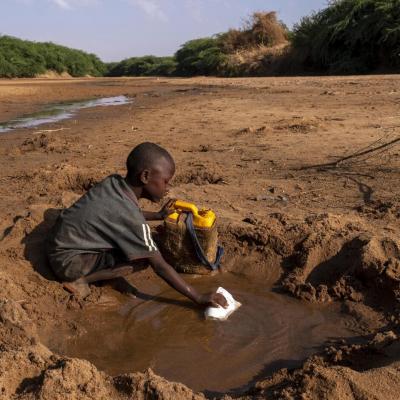
Unicef: triple threat of disease, climate risks and unsafe WASH threaten 190 million children
According to UNICEF, 190 million children across 10 African countries are at the highest risk from a convergence between three factors, i.e. inadequate Water, Sanitation and Hygiene (WaSH) services, the resultant exposure to diseases, and the impacts of climate change. Many of these countries are also facing instability and armed conflict, further aggravating the insecurity of access to WaSH services. By combining data on access to WaSH, estimates of the burden of disease attributable to unsafe WaSH services, and the exposure to climate and environmental hazards, UNICEF identifies ten countries where the risks from the combination of these three threats are the highest. These are Benin, Burkina Faso, Cameroon, Chad, Côte d'Ivoire, Guinea, Mali, Niger, Nigeria, and Somalia.
UNICEF classified its data according to three categories of threats, which together define the ‘triple threat’: first, it grouped together areas where less than 50% of the population have access to at least basic levels of water and sanitation services. Second, children under the age of five are found by the WHO to be highly exposed to the threat of disease if they live in one of the top 20 countries with the highest burden of deaths attributable to unsafe WaSH. Thirdly, the ranking of exposure to climate and environmental hazards among children comes from a tailor-made index, i.e. the Children's Climate Risk Index .
The global analysis was prepared by UNICEF in advance of the UN 2023 Water Conference, and according to the authors, reveals where investment in solutions is most needed to prevent child mortality.
Humanitarian situation in Syria and Türkiye still critical
According to ReliefWeb, almost two months after the devastating earthquakes that struck in Syria and Türkiye, the death toll from the earthquakes has now surpassed 50,000 people. In addition, it is estimated that more than 5.9 million people have been displaced. The earthquakes, which measured, 7.5 and 7.8 on the Richter scale, destroyed homes and properties, but also critical infrastructure such as water supply infrastructure. The World Bank has estimated the total cost of the direct physical damage from the earthquakes at US $ 34.2 billion, while the costs of reconstruction and recovery will be much higher.
In northwest Syria, in the governorates of Idlib and Aleppo, the earthquakes compounded an already desperate humanitarian situation. The 180,000 people that have been displaced by the earthquakes add to the 2.8 million people already living in difficult and precarious circumstances after being displaced repeatedly during 12 years of war. Humanitarian organisations are highlighting the risks of a public health crisis. The need for health care support is reported to be critical, including the need for cholera treatment and clean water.
In Türkiye, more than three million people have been forced to leave their homes, of which more than 1.5 million are now living in tent towns. The earthquakes have impacted 11 provinces, hosting 16 per cent of people in the country. Some of the quake-hit areas of Türkiye were already hosting millions of Syrian refugees in a very vulnerable situation and living in precarious shelters.
Humanitarian WaSH organisations are working with local authorities to ensure continued water supplies for internally displaced populations as well as to provide hygiene kits.

Conflict in France over policy to develop agricultural water pans
In France, protests erupted against the construction of agricultural reservoirs in the southeast of the country on the 25th of March. According to the organisers of the protests, more than 25,000 protesters had assembled in the vicinity of Saint Solines. In response, 3,000 members of the security forces were deployed and violent clashes ensued. Some 50 different civil society groups including environmentalists and trade unions have grouped themselves together under the umbrella body ‘Bassines Non-Merci’ (basins: no thanks) to oppose the further development of these storage structures. The protest in Saint Solines was, according to the organisers, the largest protest against the expansion of agricultural reservoirs so far. Proponents and opponents of the structures differ in their terminology: protesters refer to them as ‘mega basins’, while farmers prefer to refer to as ‘substitution reserves’: large scale water pans intended to provide water security for farmers during the summer months.
Currently, more than 100 such water pans are under development inland of la Rochelle and along the eastern border with Switzerland and Italy. Developed amongst others by agricultural cooperatives, a typical water pan covers some 10 to 16 hectares, is covered in thick plastic, and surrounded by a dyke of 10 m in height: such pans can therefore store up to 820 000m³ of water. Instead of being filled naturally through rainwater harvesting or runoff water, they are filled by pumping groundwater during winter and stored for use in times of peak agricultural demand. France, however, currently has critically low levels of groundwater: the Bureau of Geological and Mining Research announced in early march that the February rainfall has not been sufficient to compensate for deficits accumulated over 2022, and the Minister for Ecological Transition has announced a state of alert over groundwater levels and has announced water restrictions.
According to Joël Limouisin, vice president of the Union of agricultural enterprises, the water is drawn from shallow aquifers that are highly reactive and therefore respond quickly to precipitation. These shallow aquifers, characterised by porous limestone in the Vendee region, are well monitored in terms of their water levels, and they are observed to store water in winter which can be used to fill the water pans for summer use. To Dr Christian Amblard, specialist in hydrobiology and director of research at the national centre for scientific research, this policy of developing water storage for irrigated agriculture comes across as a ‘headlong rush’, supplying chemical intensive, industrial agriculture, whereas what would be needed for a medium to longer term management is to retain the water in the soil through a transition to a form of agro-ecology. Pumping water into water pans on the surface, in this view, has a disadvantage from the point of view of water quantity that depending on weather conditions, between 20-60% of the water pumped up in this manner will be lost to evaporation. In addition, bringing water to the surface exposes it to contamination by various kinds of bacteria, including the toxic cycanobacteria. Julien le Guet, spokesperson for Bassines Non-Merci, argues that the current beneficiaries of the water pans are not organic farms or farmer producing for the local market but rather farmers who produce for export and are the furthers removed from the ecological transition to more sustainable forms of production.
Knowledge Based, Data-Driven Decision Making
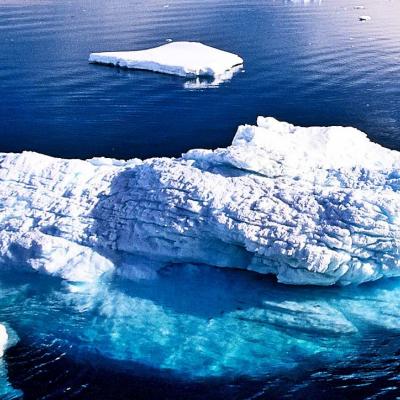
Antarctic ice melt could slow ocean currents by up to 40% in three decades
In an article published in Nature on the 29th of March, researchers have announced that new modelling shows that more rapid melting of ice in the Antarctic could lead to a substantial slowdown in water circulation in the deeper waters of the oceans. They predict that the deep ocean currents could be slowed by as much as 40% over the next three decades if the effects of melting ice is factored in to current climate models. The study assumed for the purposes of their study that the existing greenhouse gas emissions scenario would remain unchanged. The speed of the current transition in deep water temperatures and circulation is historically unprecedented, as changes in deep ocean currents have taken thousands of years to manifest in the past. Roughly 80% of the imbalance in global heat circulation caused by greenhouse gas emissions is absorbed by the oceans.
The research focused on the speed of ‘abyssal ocean overturning’, or the slow circulation of deep ocean waters that is part of global ocean currents. These currents have an impact on the circulation of heat, carbon, oxygen and nutrients in the ocean and therefore affect global weather patterns, ocean acidity, oxygen content and the food chain. Cold waters around Antarctica slowly descend to the ocean floor, contributing to a mass of water known as ‘Antarctic Bottom Water’. It has been shown that recently, the amount of water in this body has been decreasing
Research from 2010 had already shown that warming was taking place in the southern abysses of the oceans, contributing to global sea level rise.

The Five Dimensions of Water
Independently of the professional discipline from which we analyse water management - whether we are looking at water from the perspective of international water law, financial investments, engineering, or social equity – the current approach focuses too narrowly on ‘water’ as the liquid H₂O. This limited understanding currently stands in the way of reasonable and equitable use of water in a river basin, it is gradually leading to large-scale loss of storage capacity around the world, it is a waste of the huge volumes of financial resources invested in water infrastructure, and it is above all unnecessary from an engineering perspective.
In its natural state, in a river basin, the flow of water links five dimensions to each other: the water (H₂O) that flows, the solids like sediments or stones that are transported in a river, the species like fish or microorganisms, but also flora and fauna for which the river is a natural habitat, the gases and chemistry that are dissolved in the water, and the temperature of the water. Together, these five dimensions are connected and comprise the surface water of a natural river system. The connection is the flow of water in a natural river. Any change in one of the dimensions of this water has an impact on the other four dimensions. .
Present day dam building has an impact on the ecosystem in a river. Since natural rivers are continuously transporting and eroding sediments and stones, the reduction in velocity of water to zero near a dam causes sedimentation and siltation: on average, dams can lose around 1% to 2% of their storage capacity annually to sedimentation and siltation. Globally, we have lost around 50% of the storage capacity that we have built due to sedimentation. According to the World Commission on Dams and the International Commission on Large Dams, the rate of sedimentation and storage loss in existing dams has actually been exceeding the rate of construction of new dams for more than the past 30 years. Sedimentation therefore reduces storage capacity and therefore reduces the value of the infrastructure – whether for water security or for power generation. Sedimentation in the upstream of dams also leads to reduced flood protection downstream, as the sediment normally slows the flow and lessens the amplitude of a wave flowing down a river. Due to reduced flow – as well as by cutting an ecosystem in half – a dam reduces biodiversity, as organisms cannot travel up or down the river, and oxygen levels behind the dam are low. In reservoirs, organic matter accumulates and decomposes anaerobically, contributing to greenhouse gas emissions.
Downstream of the dam, the water flows with the same force but without its normal sediment load, becoming ‘sediment hungry’. It erodes the riverbed immediately below the dam and can in the long term threaten the integrity of the dam wall, as is happening in Kariba dam in Zambia, where a huge scour caused by the erosion is just below the dam about half as deep as deep the height of the dam (more than 80 m high). Further downstream, the nutrients and silt that are normally transported down the river would contribute to the fertility of soils and sustain agriculture. At the coast, the delta suffers from a shortage of sand and silt, leading to a shrinking delta with backward erosion and a further costal erosion, and removing the natural buffer that prevents salt-water infiltration into coastal aquifers and therefore impacts the water quality of the ground water.
None of these negative consequences of the use of water are necessary, if the impact of using and storing water would be compensated at the origin of the impact. It is perfectly possible to construct water storage infrastructure that enables a natural flow of silt down the river, allows flora and fauna to move both upstream and downstream, and eliminates all of the above problems. For instance by applying the improved and continuous sediment management system for the impacted sediments in reservoirs and transferring them to up to 5m diameter Archimedes screws. These can be designed in steps like a ladder along a dam. The screws can be operated in two ways and therefore it is possible to restore the natural flow of a river and during times of fish migration, allow fish to swim upstream.
In fact, operators of dams can generate more power in hydro power screws since with the water and sediment mixture, the sediment laden water has a higher specific weight that just plain water.
The founder of DB Holistic Consulting and DB Sediments GmbH has won international prizes for its design of systems for sustainable sediment management. These are the kinds of solutions that Dr Bartelt envisages applying in order to restore the 350000 km of river beds mentioned at the UN Water Conference in New York, and move the world to a more holistic understanding of water in its natural context.
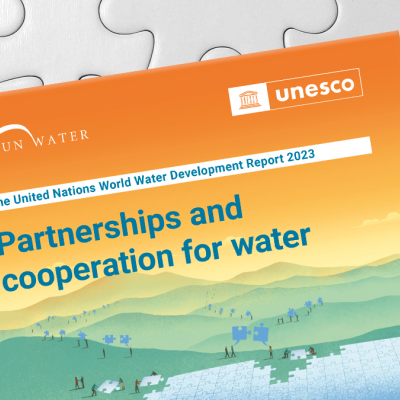
World Water Development Report 2023: the importance of cooperation and partnerships
The United Nations World Water Development Report 2023, dedicated to the theme of partnerships and cooperation for water, was launched on the 22nd of March 2023. The report emphasises the role of cooperation, emphasising the importance of partnerships in accelerating progress towards Sustainable Development Goal 6 on water and sanitation.
Although SDG6 consists of an ambitious framework of 8 targets and 11 indicators that capture different dimensions of the water cycle, currently, countries are still predominantly reporting on progress on the first three indicators – related to drinking water and sanitation – rather than on the newer indicators on water quality, water stress, integrated water resources management and water related ecosystems. Since 2020, it has been clear that progress in achieving SDG 6 has been slow and that in some areas, efforts need to be quadrupled to achieve SDG 6 by 2030.
In the report, partnerships are presented as an important means to improve water governance and decision making, also by stimulating innovations and supporting efficiencies in implementation. A key example, as well as one of the foundations of agricultural water use, is the basic institutional building blocks of rural water use, i.e. Water User Associations. These WUA’s bring together water users around the management of a common resource, and if well managed, they provide an effective form of joint decision making, transparency and accountability around local water decisions. As urban areas continue to expand, in many areas they enter into direct competition with rural areas, and many governments have begun to cap agricultural water use in order to secure more water for urban areas.
Another example of water partnerships is the partnerships that are formed around watershed protection: utilities have an interest in protecting watershed for long-term water security, rural communities have an interest in protecting themselves against both water shortages and floods. Water funds can bring together partners from a broad range of interests including cities, industries, rural communities and environmentalists to collectively invest in protection of upstream areas that preserve the integrity of the water cycle.
In human settlements, effective stakeholder involvement in planning and implementation leads to services that are more appropriate to the needs and resources of poor communities and increases public acceptance and ownership of systems. Water operators’ partnerships (WOPs) connect established, well-functioning utilities with others that need assistance or guidance. The resulting improvements in capacity and performance can facilitate utilities’ access to financing for infrastructural investments, supporting further extensions or improvements in services.
In short, nearly every form of intervention in water requires some level of partnership. Such partnerships are by no means guarantees of success: as attested to many years ago by the likes of Elinor Ostrom, there are both positive and negative incentives to co-produce sustainable development outcomes. However, there is evidence to support the idea that some basic principles of successful cooperation exist. The first of these is that inclusive stakeholder participation promotes buy-in and ownership around public programmes. Secondly, diversity expands co-benefits and improves performance. If a diversity of actors with different interests manage to achieve collective action around commonly agreed objectives, this leads to a broad range of co-benefits and therefore improves performance. Thirdly, a broad and integrated approach that involves actors from outside the strict confines of the ‘water community’ can deliver a range of complementary solutions to a diversity of challenges. Fourth, the quality of data underlying decision making is a key to effective decisions. Furthermore, an open and transparent exchange of data and information is also integral to effective cooperation and builds trust between partners. Fifth, collective action creates additional opportunities for financing: having a strong business case for investment depends strongly on the strength of institutional arrangements, and cooperation can serve to lower the barriers to investment.
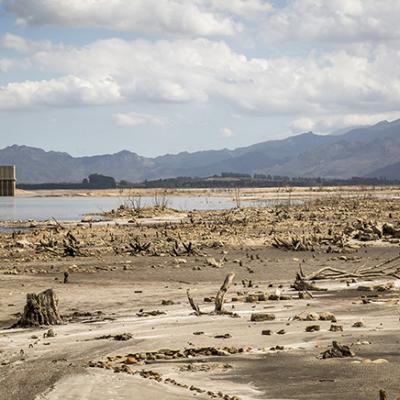
Study shows that privileged urban populations are key drivers of urban water crises
In the first two decades of the twentieth century, 79 cities across the world have suffered acute water shortages due to continuous growth in demand as well as the impacts of climate change. Traditional explanations of these crises point to the continuous growth of urban areas, both through population growth and economic growth, as well as changes in the water cycle that reduce the predictability and reliability of existing water supply systems.
However, in a publication in Nature Sustainability, researchers led by Elisa Savelli at the Department of Earth Sciences at Uppsala University show how social inequalities across different groups play a major role in the manifestation of these crises: the researchers explain urban water crises as being generated by asymmetric power relations and come to the conclusion that water crises such as that experienced by the city of Cape Town are also a result of the unsustainable practices of the elite.
The study focuses on the city of Cape Town to make its argument – although the authors make the point that similar dynamics exist in other cities faced with shortages. Based on the 2020 census, 13,7% of the population – the elite and upper middle-income groups – use more than half (51%) of the household water in the city. Informal dwellers and lower income households, by contrast, constitute 61,5% of the population but consume just 23,7% of household water. The authors argue that this system is unsustainable: it fosters consumerism and reduces the amount of water available for less advantaged sections of the population. In the long term, this level of overconsumption can lead to depletion of local surface and groundwater sources.
Towards the end of the 2015-2017 drought, the city’s supply dams were at critically low levels and a series of water demand management measures were introduced. However, there restrictions disproportionately affected the poorer sections of the population: these households had to reduce their daily consumption per capita from 197 litres per day to 101 litres per capita per day, a reduction of 51%. This forced these households to reduce their consumption for basic needs such as bathing, laundry, cooking and sustaining their livelihoods. The privileged households by contrast suspended non-essential uses such as filling swimming pools, watering gardens or washing cars. In addition, there was a rapid increase among more privileged households of consuming water from private water sources (groundwater) which could lead to over-abstraction of these sources in the longer term.
The authors conclude that even in a situation such as in Cape Town which features progressive block tariffs that aim at cross-subsidising poorer households, the poor have been disproportionately affected by water demand measures while generating more environmental risks for the city. In the longer term, the responses to water scarcity that overlook inequalities in distribution of water within the city or continue to tolerate overexploitation of water resources cannot be part of resilience strategies. The prevention of overconsumption itself should therefore be a part of future resilience strategies.

New scale for Atmospheric Rivers could be applied globally
A new study shows that it is possible to apply a five-point scale to what climatologists refer to as ‘atmospheric rivers’. Using such a scale could assist early warning systems and underpin preventive action for extreme weather events. Recently, more and more studies have pointed to the importance of atmospheric rivers in transporting moisture across the globe. The recent increase in frequency and destructive impact of extreme weather events which are associated with heavy precipitation in the form of snow, hail or rain, has also led to an increased interest in the topic.
An ‘atmospheric river’ is described as a long, narrow and relatively short lived ‘corridor’ of rain or snow. The origins of these rivers are to be found in low pressure systems that have their origins in tropical areas and are rapidly transported by low level jet stream. Where these moisture-laden low pressure zones are forced upwards by mountains or, more often, by being lifted to higher altitudes by a warm airstream moving towards the earth’s poles. In the middle latitudes of the earth. atmospheric rivers account for an average 90% of the vapour transport towards the poles from middle latitudes. Due to increasing global temperatures, these atmospheric rivers are growing in frequency and intensity: California has recently experienced nine such events in a row.
Using NASA data, researcher Bin Guan and colleagues examined the potential global application of an atmospheric river scale of 1-5 - with a similar classification to that of hurricanes - which has recently been being used in North America. The scale, it is thought, could help to distinguish ‘beneficial’ atmospheric rivers such as drought-busting events from destructive events such as floods.
The initial results of the study are promising: the scale is relatively simple to apply globally and could help communicate the potential impact of an atmospheric river, especially against the background of increased global data availability and potential for international collaboration.

IWMI leads Transformative Future for Water Security Initiative
In the run up to the UN 2023 Water Conference, The International Water Management Institute (IWMI) coordinated a year-long dialogue across eight regions of the world focused on transformative action to strengthen water security. These regional dialogues culminated in a global conference in the month preceding the global conference, at which eight core actions were identified and validated by the stakeholders involved in the dialogue. The initiative, known as the Transformative Futures for Water Security Initiative (TFWS), sought to build partnerships and coalitions among the policy, business, development, practitioner, and science communities around the scientific base for action on water security.
Crafted against the background of observed water insecurity in many regions of the worlds and an urgent need to accelerate action around the implementation of Sustainable Development Goal 6 (SDG 6) on water and sanitation, the central aim is to better align the water agenda with scientific progress and evidence. Behind this is the aim to build mission-oriented partnerships and coalitions round action on the eight priority areas to improve water security.
The first priority area identified was to build farmers’ resilience to climate change and water risks. Soaring water and energy demand for food production in a changing climate means that the past is no longer a guide to decision making, and managing risks requires applying climate smart interventions to increase water productivity and transform agriculture. With 80% of global water use currently accounted for by the agricultural sector, it is no surprise that this issue was identified as the top priority.
The second area identified through the dialogues was the need to deliver sustainable, stakeholder driven Water, Sanitation and Hygiene (WaSH) services. It is estimated that 2.2 billion people lack safely-managed drinking water1 and nearly half the world lacks access to safely managed sanitation. Population increases, leading to increased demand, especially in urban areas, is contrasted with lack of water and water services in rural areas. Here, participants emphasised the importance of the accountability of responsible institutions, linked to the availability of adequate information, and clear policies aiming at achieving universal access.
Third, increasing freshwater supply was prioritised. Per capita available renewable freshwater resources have declined worldwide by 20% and by 41% in sub-Saharan Africa, and by 32% in West Asia and North Africa over the past decade. With limits to supply being reached in many areas, a transition is needed from linear water used to circular water use, while upscaling technologies for non-conventional water and focusing efforts on reducing non-revenue water.
Fourth, there is the imminent threat of existing infrastructure being rendered redundant – so called ‘stranded assets’ – if they are not made future proof. There is a need to ensure better cooperation between built infrastructure and ecological infrastructure in the face of degradation of the headwaters of rivers, the melting of glaciers, the loss of wetlands, the trapping of silt, and declining water quality.
Following these four priorities, stakeholders also agreed on the need to overcome data and information barriers, integrate different water values and different stakeholder perspectives into a unified water vision, deliver ‘good’ water governance and transboundary cooperation, and focus on responding to future water risks and water regimes.
Finance for water cooperation

Global Commission calls for transformation of the Economics of Water
In its March 2023 publication, the Global Commission on the Economics of Water calls for a transformation of the economics and governance of water. Starting from the premise that we are currently facing a water crisis that is systemic, both local and global, and which undermines the achievement of all the sustainable development goals, the Global Commission presents seven leverage points to ‘turn the tide’ on global water management.
Highlighting some of the world’s most urgent water challenges, the report touches on the fact that the global water cycle has been disrupted for the first time in human history and is intertwined with climate change and biodiversity loss. It emphasises that action on climate change is inseparable from action on water, and that communities and countries are interconnected precisely through the global water cycle. And despite many decades of infrastructure development, humanity faces a 40% shortfall in water supply by 2030. A long standing and pressing issue is the lack of safely managed water for more than 2 billion people, as is the persistence of high mortality rates among children under 5 years old due to waterborne diseases. Without strong action, the report states, we are, in other words, heading for massive collective failure.
Taking a broad view of what constitutes the ‘economics’ of water, the report argues that the global water cycle needs to be managed as a common good to be protected collectively. For governments this requires a rethink of fundamentals such as property rights in water and water pricing, which can lead to unsustainable outcomes that benefit some sectors and groups in society at the expense of others. This requires a recognition of our interdependence and the need to mobilise a broad group of stakeholders around goals that offer the greatest value locally, regionally and globally. Within this, new forms of partnership between the public and private sectors are needed, whereby the public sector proactively takers a systems approach, co-creating solutions with the private sector in a symbiotic manner by investing in skills, technology and infrastructure. Here it is important not only to leverage more capital (current investments in water systems need to be at least tripled to achieve SDG 6), but also to pay attention to careful institutional design that create incentives for operational efficiency, investment in resilient infrastructure, and generate broad socio-economic benefits.
The authors argue that the value of water needs to be mainstreamed into decision making, ensuring better use for social and environmental goals. The underpricing of water that is prevalent in many sectors needs to be stopped, including the phasing out of some USD 300 billion in water and sanitation subsidies and a critical review of some US $ 400 billion in agricultural subsidies. And yet,targeted subsidies are also needed to ensure that benefits accrue to poor and vulnerable communities. It also implies mobilising finance at the international level to provide support to low- and middle -income countries to achieve universal access to water and sanitation.
To achieve this, several tools are needed such as the establishment of Just Water Partnerships to enable investment in water resilience and sustainability in low-and middle-income countries. And as is the case for carbon, the disclosure of water footprints of production processes could be a key goal for international cooperation, resulting in mandatory water disclosure requirements.
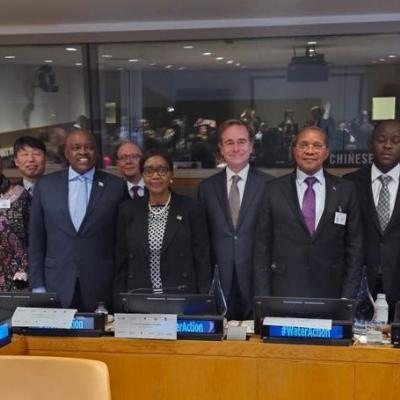
Six Current and Former Heads of State presented with Presidential Global Water Changemakers Award
Six serving or former heads of state have received the Presidential Global Changemakers Award at the UN Water Conference in New York. Of these heads of state, four are co-chairs of the International High-Level Panel on Water Investments in Africa: H.E. Macky Sall, President of the Republic of Senegal, H.E. Hage Geingob, President of Namibia, H.E. Mark Rutte, Prime Minister of the Netherlands, and H.E. Jaya Kikwete, former President of the Republic of Tanzania. The other recipients are H.E. Hakainde Hichilema, President of the Republic of Zambia, and H.E. Dr Hussein Ali Mwinyi, President of Zanzibar, who launched the Zambia Water Investment Programme and the Zanzibar Water Investment Programme.
The International High-Level Panel on Water Investments in Africa was launched during the 9th World Water Forum in Dakar, Senegal and aims to mobilise US $ 30 billion per year until 2030 to help close the existing investment gap in water and sanitation in Africa. The African Development Bank has estimated that Africa requires an investment of US $ 64 billion annually in water and sanitation in order to achieve the Africa Water Vision 2025. However current annual investments in the sector do not exceed US $ 19 billion, leaving a large investment gap.
In July 2022, The Water Diplomat reported the ‘game changing’ launch of the first national Water Investment Programme under the Africa Investment Programme, i.e. the Zambia Water Investment Programme which aims to leverage US $ 5.75 billion dollars.
The awards were presented to the six leaders on March 22, 2023, by HE Mokgweetsi Masisi, President of Botswana and Chair of the Presidential Global Changemakers Award. At the same event the International High-Level Panel on Water Investments in Africa released its report entitled “Water Investments in Africa: Pathways for Mobilisation of $ 30 billion Annually by 2030”.
National and Local News
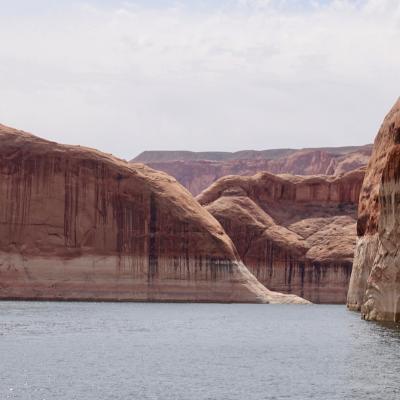
U.S. Interior Department announces measures to protect the Colorado River Basin
The U.S. Bureau of Reclamation in the Department of Interior has drafted a set of three different options to preserve the water in the Colorado River Basin, which has been suffering from the impacts of drought since 2020. The water levels in the river’s main reservoirs in the river – Lake Powell and Lake Mead - have recently fallen to critically low levels. At the beginning of December 2022, the river's various water storage systems were only 28% full, triggering emergency water sharing measures between the United States and Mexico. The Bureau of Reclamation had also given the seven basin states until the end of January to discuss a new joint agreement of water reductions, after a similar deadline set in August 2022 had passed. Six of the seven states submitted a proposal, but California, which uses the largest proportion of the Colorado’s water, submitted a separate proposal.
The current options being presented by the Department of the Interior relate to a revision of the short- and medium-term operating guidelines for the Hoover and Glen Canyon dams as well as the allocations to the different states in the basin. This step from Federal government comes after months of negotiations between the basin states, which remain largely unresolved.
In its response the Bureau of Reclamation presents three scenarios: a do-nothing scenario, a scenario in which states are allocated water rights based on the seniority of their rights, and a scenario in which each state must cut its water use by 13% beyond cutbacks in demand that have already been agreed to. The current analysis by the Biden administration still retains three policy options and steers clear of imposing cutbacks unilaterally, but the release of its environmental analysis of the river and the proposed options do place significant extra pressure on the states in the basin to come to a negotiated agreement.

Restoring mangrove forests in the Niger Delta
I – Martha Agbani - grew up in the Niger Delta in Nigeria as a member of the indigenous farming and fishing community of Yaataah. For decades, our families lived in constant contact with the waterways. My grandmothers relied on them to collect our food and to make pottery to sustain our family. Unfortunately, things have changed. Since the commencement of fossil fuel extraction operations by Shell and the Nigeria National Petroleum Corporation in 1957, the water that we have long depended on has become contaminated. And it’s not only the water, the impact of fossil fuel extraction also leads to acid rain, high temperatures, dryer soil, delayed rains and destruction of marine habitats.
Following the observation that although women were most impacted by environmental degradation and yet not fully included in environmental restoration work, we decided to take the matter into our own hands. We, the gender and environmental rights organisation, Lokiaka Community Development Centre, an environment and gender rights organisation that I lead, trained 250 women and girls in mangrove restoration and biodiversity management.
Mangrove forests are a crucial and diverse ecosystem. Their conservation is critical to tackle the climate crisis. They store up to four times more carbon than traditional rainforests, their dense root systems serve as shoreline protection against floods and storms, prevent erosion and maintain the water’s quality and clarity. Our vision is this: to restore 500.000 mangroves a year and 5 million mangroves within the next decade. We have already seen our work paying off : Shellfish, like crabs, lobsters and shrimps, all part of our basic diet, have returned to the vital mangrove habitat. We have regained hope.
This is our call: Resources must be shifted away from fossil fuel extraction. It is polluting our waters and driving us further into the climate crisis. We plead our governments, banks and companies to listen: Efforts and resources must be directed towards the true gender-just climate solutions that us, women and girls, are implementing in the Niger Delta. The work we are doing, restoring mangrove habitat is a real and just solution to climate change.
The Lokiaka Community Development Centre has been carrying out campaigns targeting Shell and the Nigerian government to provide potable water in communities, and is pushing these actors to clean, remediate and restore the Ogoni environment.
This is one of the stories highlighted in the annual WeWomenAreWater Campaign by the Global Alliance for Green and Gender Action showing the leadership of women and girls from local and indigenous communities in the protection and sustainable use of water resources, and calling for support for gender-just climate solutions.

Niger confirms intention to Accede to Helsinki Convention
On the 2nd of March, the government of Niger confirmed its intention to acceded to the United Nations Convention on the Protection and use of Transboundary Watercourses and International Lakes – otherwise known as the Helsinki Convention. This announcement follows a stakeholder workshop jointly hosted by the Ministry of Hydraulics and Sanitation of Niger and the Secretariat of the Convention. Niger has been participating in the activities of the Convention since 2018.
Although the Helsinki Convention originated as a convention for the pan-European region in 1992 and entered into force as such in 1996, an amendment in 2016 made it possible for all UN member states to accede to it. Since 2016, Cameroon, Chad, Ghana, Guinea Bissau, Senegal and Togo have acceded to it, while countries such as Nigeria, Uganda, and now also Niger, have commenced the process leading to accession. In the context of Sustainable Development Goal 6 on water and sanitation, one of the 11 indicators of progress include the “percentage of transboundary basin area within a country that has an operational arrangement for water cooperation”. As such, acceding to a convention such as the Helsinki convention is a step in the direction of having an ‘operational’ arrangement for cooperation.
Niger shares 90% of its water resources with neighbouring countries and is a signatory to the Lake Chad Basin Water Charter. It is also a member of the Niger Basin Authority and the Lake Chad Basin Commission. By becoming a party to the Helsinki Convention, the entirety of Lake Chad will be brought under the framework of the convention. Lake Chad’s surface area has been steadily declining from 25,000 km² in the 1970’s to less than 1,500 km² today. Approximately half of the decline in water levels in Lake Chad are attributed to climate change, while the other half is attributed to human interventions such as damming and irrigation. Local livelihoods are largely dependent on the resources of the lake and are being affected negatively by the shrinking of the lake. In addition, a report compiled by UNDP points to local insecurity caused by banditry, abductions, robbery, and the rise of violent extremism in the region. The Lake Chad Basin Commission is seen as a common platform for a regional approach to combine security interventions with longer term development interventions.
